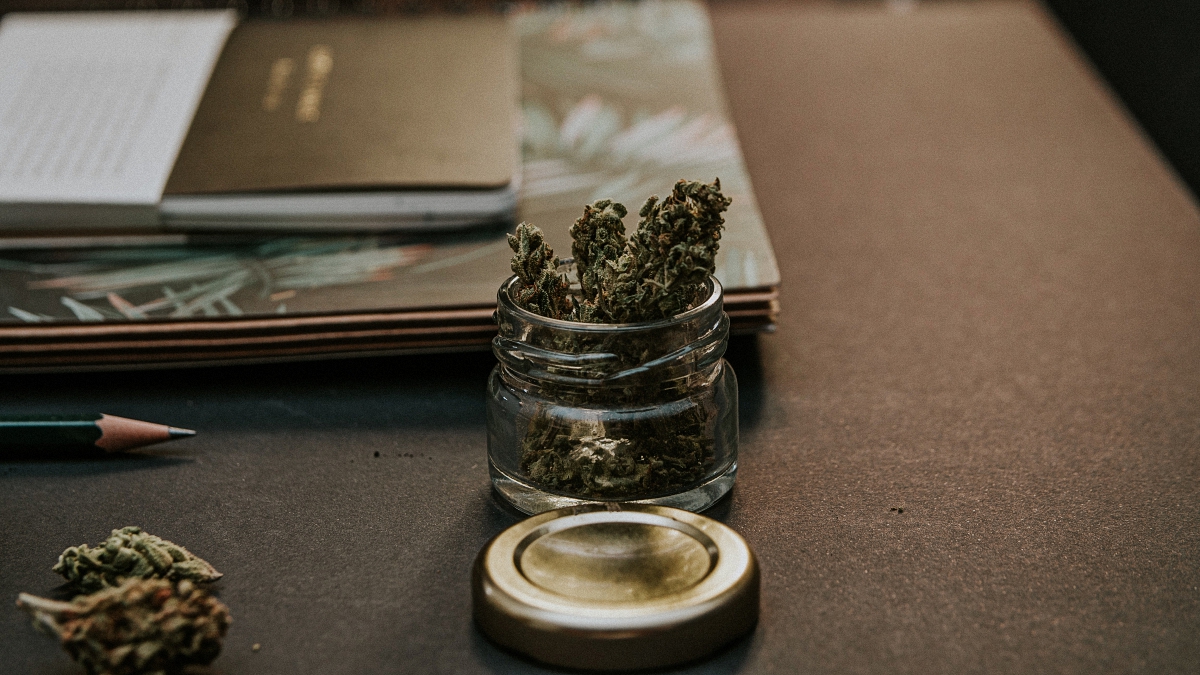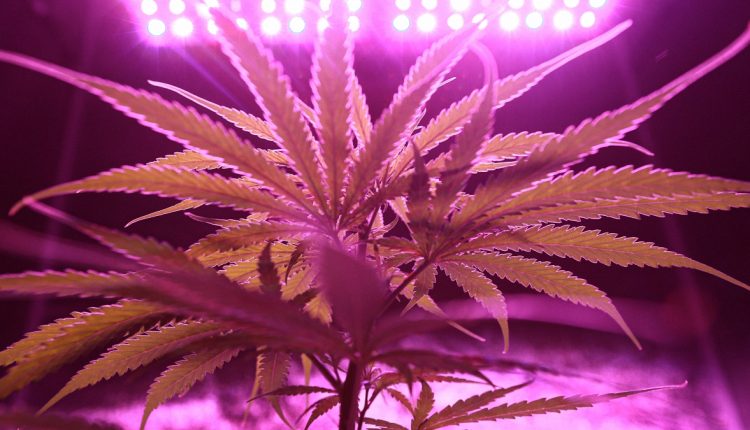Weed 101: You don’t want your buds to have seeds in them.
Even a novice smoker understands why. If you don’t remove the seeds your smoke will be harsh and nasty, and it’s a major pain having to pick seeds out of buds.
When you buy from a dispensary or reputable dealer, you shouldn’t have to worry about the problem. If you grow your own stash, though, you have to be more concerned about issues like seeds.
And that means understanding the difference between male, female and hermaphroditic plants.
Male and Female Cannabis Plants
Cannabis is dioecious, which means that each plant will be either a male or a female plant. You can tell the sex of a pot plant by looking at its “pre-flowers,” in the area where its branches grow from its stem. Male plants will have pollen sacs that look like tiny balls; females will have small white hairs (known as stigma and sometimes incorrectly called pistils) growing out of oval-shaped ovules and bracts. These indicators begin to appear 5-6 weeks into the plant’s growth cycle.
The sex of cannabis plants is very important because only females produce buds with a high concentration of cannabinoids like THC. Males don’t produce buds at all and have only small amounts of the good stuff in their leaves and stems. That’s one reason why cultivators only want female plants in their grow room.
The second reason is that even a single male plant can ruin an entire crop. If it releases pollen that fertilizes the female plants, most of the latter’s’ energy will be used to create seeds rather than large, valuable buds – and you end up with seeds in the buds that are harvestable. Unless growers are using males to breed new strains, they take pains to be sure they use only female plants or feminized seeds.
And that brings us to hermaphrodites.
Hermaphroditic Cannabis Plants

Most people can’t tell you exactly how they gained this knowledge, but the basic description of a hermaphrodite is commonly understood: it’s an organism with both male and female reproductive organs.
Unfortunately for marijuana growers, cannabis is a plant that can sometimes become monoecious, or as most people call it, hermaphroditic – meaning that without warning, a crop that was carefully planted or selected to be all-female may suddenly be threatened by the release of pollen from a “hermie.”
Inspecting plants early in the growing process allows growers to quickly identify and get rid of hermies which have developed both sex organs due to their genetics. However, some plants don’t show their male side until late in the season. It usually happens in plants that are genetically-inclined toward hermaphrodism and have been stressed in some way during their growing period.
Late-season hermies are distinguished by the development of “anthers,” more commonly called “bananas” (because that’s what they look like), in the area where the plant’s sex organs can be seen. It’s crucial to keep a close eye on plants throughout their active growing period because hermies must be removed from the area immediately.
Why Do Cannabis Plants “Turn” Hermaphroditic?
We’ve mentioned that this phenomenon occurs in plants with a genetic inclination when they’ve been stressed. Here are some of the conditions that could cause a female pot plant to become a hermie.
- Too late in the season: If the plant hasn’t been harvested by the end of its flowering cycle, it will sense that it is about to die. A plant with the genetic ability to create male sex organs will do so, so it can pollinate itself to produce a new plant in the spring. It’s crucial to harvest all plants at the right time, so overripe buds won’t signal a plant to turn hermie.
- Too much or too little light: Either issue can cause a plant to go hermie; light leaks at nighttime when the plants should be in the dark, lights that are too bright or not bright enough, lights that aren’t appropriately positioned – all can stress the plant and cause it to go hermaphroditic.
- Poor nutrition: Overfeeding or underfeeding plants can trigger genetically-inclined plants to become hermies, as can over- or under-watering, using nutrients with the wrong pH level, using bloom boosters that create the wrong ratios of minerals like potassium or phosphorus, root rot or poor aeration – basically, anything less than optimal growing conditions.
One final note: A plant is much more likely to hermie if it’s been grown from seeds, particularly feminized seeds.
What to Do If You Have a Hermaphroditic Plant
The easy answer is usually the right one: bag it up (so no pollen can escape) and get rid of it, as soon as possible. There are usually about ten days between flowering and pollen release, giving you enough time to be cautious and ensure that nothing escapes the plant during transportation.
However, some people only have a few plants and can’t really afford to give up on one (or more of them). In that case, it may be worth trying to save the plant. Turn off all fans and spray the flowers or bananas with water (so pollen won’t inadvertently be released), remove them carefully and dispose of them. Then try to correct whatever might have caused the plant to stress, so the problem doesn’t reoccur.
If you do have to get rid of the plant, it doesn’t have to be a complete loss. You can make decent edibles, oils or other concentrates from it, and if you’re “desperate” enough you can even smoke it. Just don’t expect anything close to the same buzz you’ll get from the buds still left on the plants inside the grow room.
